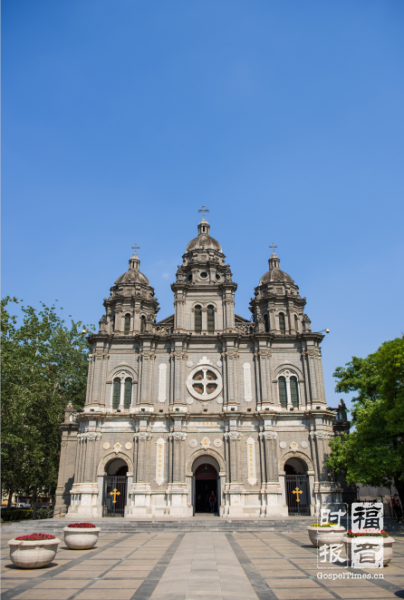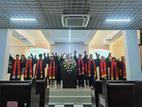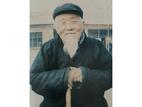On Beijing's bustling Wangfujing Street, there is a majestic church called "Beijing Wangfujing Church" (also known as The Church of St. Joseph and the Octagonal Church), nicknamed the "East Church". The church, which has been burned down and rebuilt, still stands there and has witnessed a legendary story.
The Church of Wangfujing is the second church of the Jesuits in Beijing after the Xuanwumen Church, founded by Italian missionary Ludovico Buglio and Portuguese missionary Gabriel de Magalhães (henceforth referred to as "Magaillans"). They had a legendary experience before they built the church. They went on a mission in Sichuan. Soon after, the peasant revolt leader Zhang Xianzhong (who broke into Chengdu), out of curiosity about Western science and technology, let them work as his assistants to manufacture astronomical instruments. Later, Zhang turned to his beastly nature and committed mass massacre in Sichuan, and was preparing to execute the two priests. At the same time that Prince Hogg led the Qing Army to attack the Great Western Army, Zhang rushed into battle and was shot dead. As a result of their survival, the two priests were captured by Prince Hogg and made to run errands at the palace. After Hogg's death, with the help of Tang, they regained their freedom and continued to work for the Catholic Church.
In 1655, Emperor Shuzhi gave Buglio and Magaillans a house and a vacant lot (the site for the present church), and they took the opportunity to request the conversion of the eight-sided trough house into a church, with Shunzhi's permission to build Beijing's second Catholic church. The original East Church was reconstructed for residential purpose. The building's overall presentation was in traditional Chinese architectural style, with only the architectural details decorated in Catholic style.
In the early years of the Kangxi Emperor, Buglio and Magaillans rebuilt East Church and converted the original Chinese-style building into a Western-style building. Soon after, the Confucian astronomer Yang Guangxian launched the "calendar dispute", with the argument that "it is better to let China have no good calendar than to allow westerners to stay in China". This position was supported by Kangxi's right-hand man, Ao Bai, and the missionaries in Beijing were arrested and imprisoned. The church was then extensively damaged.
After Kangxi gained full control of his throne, the church was able to re-operate and the Wangfujing Church was returned to the church.
East Church was destroyed by the 1720 earthquake, but was repaired the following year. At that time, an Italian missionary and famous court painter, Giuseppe Castiglione, had come to China. Many of the church statues are his work, with high artistic value.
In 1807, East Church was engulfed by a fire due to the negligence of missionaries, and many precious works of art were torched.
To add insult to injury, Emperor Jiaqing imposed a strict ban on religion, which prevented the church from being repaired and the Mass was suspended. The church was deserted ever since.
In 1880, the Bishop of the Diocese of Beijing, Tian Tsi, raised funds from Europe to rebuild the Wangfujing Church hall, which was completed in 1884. The newly built East Church is was a brick-and-wood Roman-style building, and the walls are made of city bricks. The building was cross-shaped, with three bell towers on the front, all of which are dome structures, and the tops of the bell towers were decorated with crosses. However, after on the eve of the 20th century, the Boxer Rebellion movement broke out in northern China, and East Church was burned down again.
In 1904, the Church of France and Ireland rebuilt the East Church, which is the current Wangfujing Church. After the reconstruction, East Church was fully restored in the shape and scale that it had before the incident.
In 1966, the Cultural Revolution broke out; the church was again forced to close and got occupied by a primary school. It did not reopen until 1980. The surviving Wangfujing Church building is a three-story Roman-style building, with fine details that express several elements of traditional Chinese architecture. The whole building successfully blends the styles of Chinese and Western architectures. In 2000, along with the transformation of Wangfujing Street, the Beijing Municipal Government invested in the construction of a square in front of the church, making the Wangfujing Church a landscape of Wangfujing Pedestrian Street. The church has become one of the most well-known Catholic churches in Beijing.
- Translated by Charlie Li












